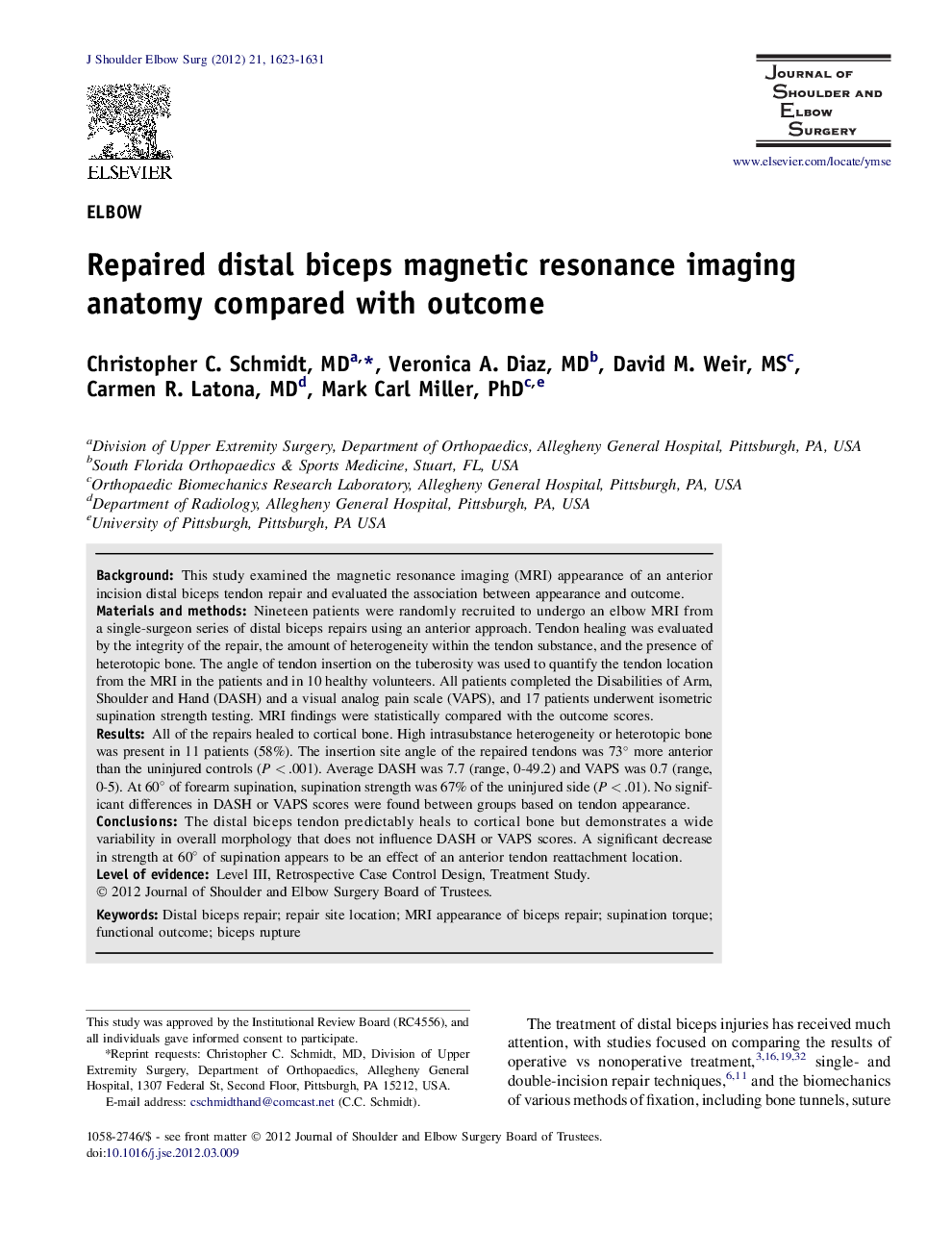| Article ID | Journal | Published Year | Pages | File Type |
|---|---|---|---|---|
| 4073829 | Journal of Shoulder and Elbow Surgery | 2012 | 9 Pages |
BackgroundThis study examined the magnetic resonance imaging (MRI) appearance of an anterior incision distal biceps tendon repair and evaluated the association between appearance and outcome.Materials and methodsNineteen patients were randomly recruited to undergo an elbow MRI from a single-surgeon series of distal biceps repairs using an anterior approach. Tendon healing was evaluated by the integrity of the repair, the amount of heterogeneity within the tendon substance, and the presence of heterotopic bone. The angle of tendon insertion on the tuberosity was used to quantify the tendon location from the MRI in the patients and in 10 healthy volunteers. All patients completed the Disabilities of Arm, Shoulder and Hand (DASH) and a visual analog pain scale (VAPS), and 17 patients underwent isometric supination strength testing. MRI findings were statistically compared with the outcome scores.ResultsAll of the repairs healed to cortical bone. High intrasubstance heterogeneity or heterotopic bone was present in 11 patients (58%). The insertion site angle of the repaired tendons was 73° more anterior than the uninjured controls (P < .001). Average DASH was 7.7 (range, 0-49.2) and VAPS was 0.7 (range, 0-5). At 60° of forearm supination, supination strength was 67% of the uninjured side (P < .01). No significant differences in DASH or VAPS scores were found between groups based on tendon appearance.ConclusionsThe distal biceps tendon predictably heals to cortical bone but demonstrates a wide variability in overall morphology that does not influence DASH or VAPS scores. A significant decrease in strength at 60° of supination appears to be an effect of an anterior tendon reattachment location.
